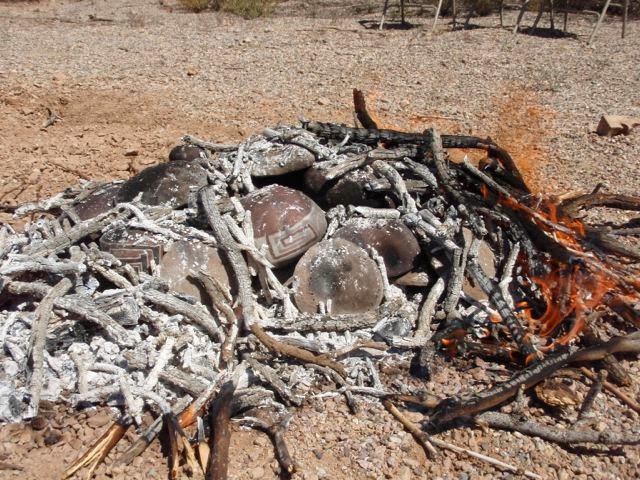 |
| Letting pots warm up. |
Last week the class was cancelled due to wind. Today it was predicated to be the hottest day of the year. 96 degrees. Sitting in the sun and building a hot fire, wasn't too bad, as we started at 9AM and were done by 11:30.
Happily no pieces broke in the firing.
 |
| Already to hot to handle |
 |
| Turning pots to warm both sides. Hot work. |
 |
| Setting stones in the ashes to hold pots off the coals |
 |
| Placing the pots. Andy wished he had brought his welding gloves and metal tongs. |
 |
| Pots can touch. |
 |
| Air circulation is important. |
 |
| Stacking mesquite branches |
 |
| Not the perfect fire. Wanted it to all burn at once. |
 |
| Because it wasn't a quick clean burn, some pots got soot and ash marks. |
 |
| Waiting for pots to cool. Can be pulled from the fire with metal tongs. Anything that can burn (like a stick will mark the pot). |
 |
| pieces pulled out by Andy. "Garage Sale" |
 |
| Checking it out. |
 |
| Paige's bowl. White and blacks came out nice |
 |
| Scott's bird pot. The face is perfect |
 |
| My pot. The black is greyed out. May have been the firing. There are so many variables. |
 |
| Nice coloring. |
 |
| My puka with desirable fire marks. |
 |
| Finished pots. Photo by Andy. |
























